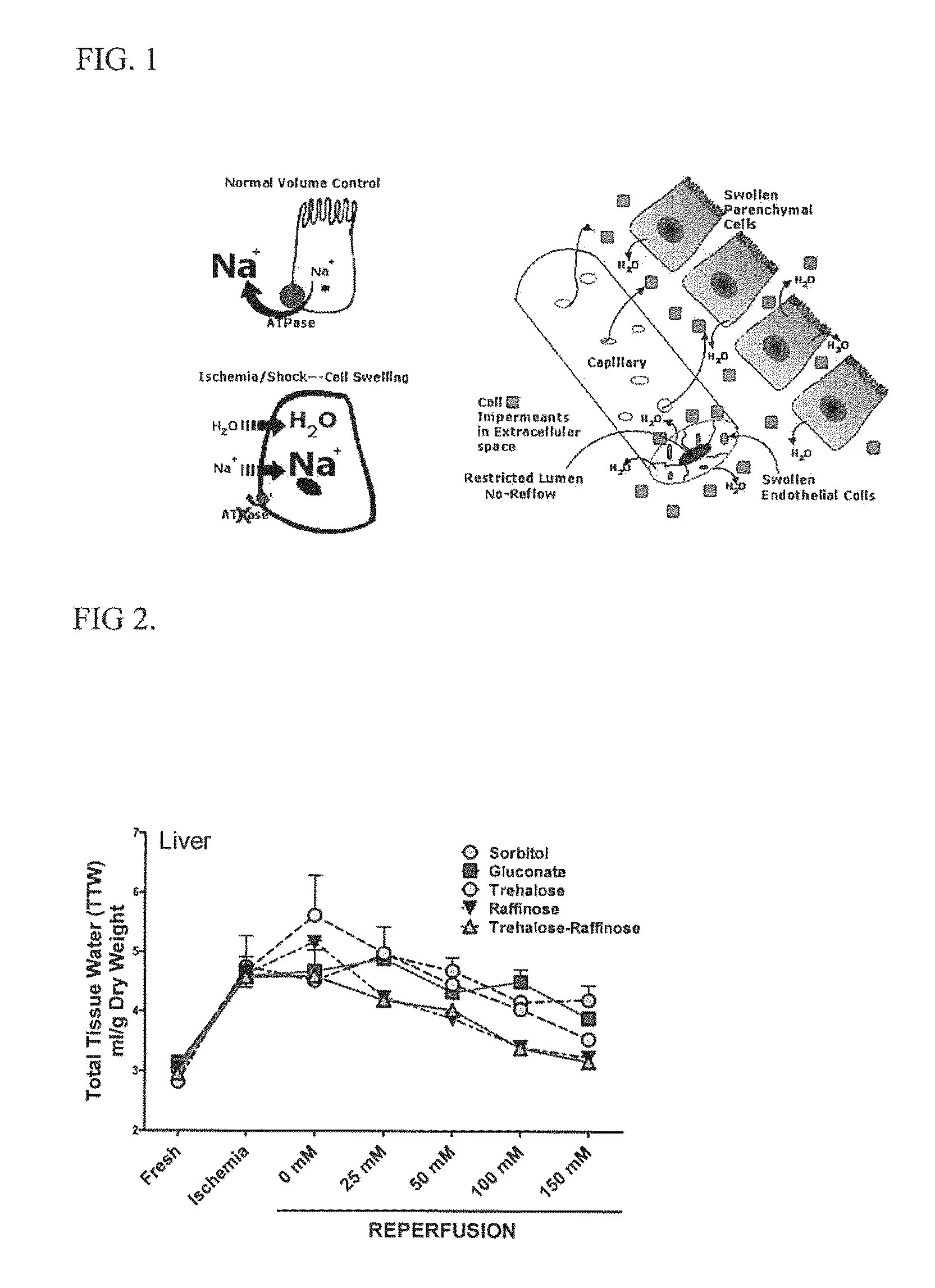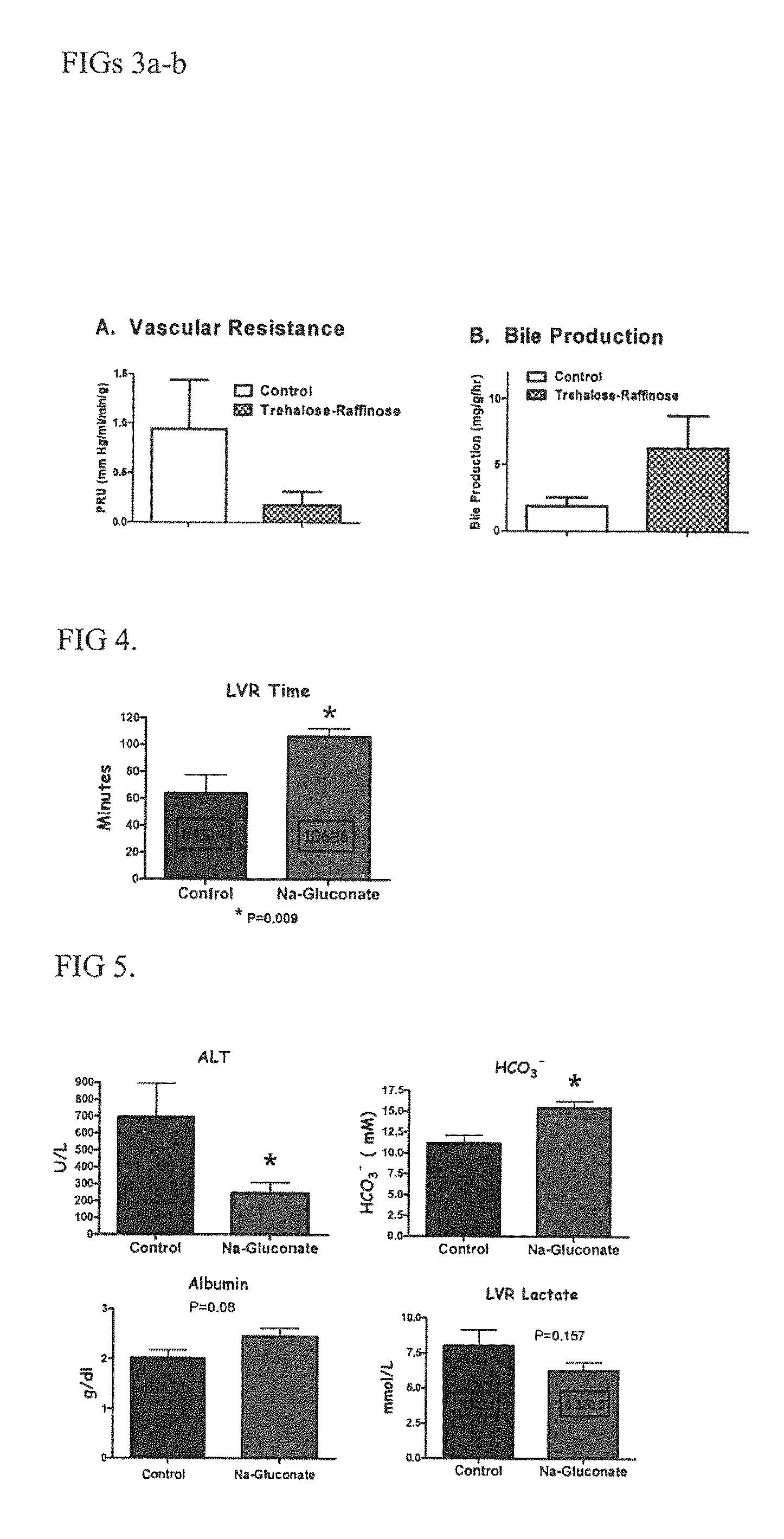Organ protection solution and method of use
a technology of organ protection and solution, applied in the field of organ protection solutions, can solve the problems of hs or colloid solution, glucose or mannitol has been tested with less success, and many cellular complications and practical limitations, and achieve the effect of preventing lethal cell swelling
- Summary
- Abstract
- Description
- Claims
- Application Information
AI Technical Summary
Benefits of technology
Problems solved by technology
Method used
Image
Examples
example 1
[0039]Organ Donation and Preservation from DCD Donors: A series of experiments were performed to explore the optimal impermeant effect of a family of likely useful impermeants. The variables chosen were
[0040]The molecular species of impermeant
[0041]The best concentration (in the extracellular space)
[0042]The best time of administration
For these experiments, the impermeants used included specific anions and small saccharides such as sorbitol, gluconate, trehalose, lactobionate, maltitol, raffinose, and combinations of the same. These agents were dissolved in water of buffer solution such phosphate buffered saline and administered by intravenous infusion.
[0043]FIG. 2 illustrates the effect of various impermeants on cell swelling of liver slices. The outcome variable was cell swelling of liver tissue slices exposed to periods of warm ischemia and reperfusion to mimic the conditions that a DCD donor liver would encounter. For these experiments, the best impermeant solution had the highe...
example 2
[0047]Hemorrhagic shock model in rodents: Gluconate was administered in the organ protectant solution (e.g., a low volume resuscitation (LVR) solution with cell impermeants according to the present invention) in order to achieve a theoretical gluconate concentration of about 60 mM in the extracellular fluid compartment (subsequent experiments have shown that about 100 mM is probably optimal). The idea of low volume resuscitation is to give the shocked patient small volumes of intravenous fluids to prolong the time on the field to allow for rescue and transport to a forward hospital where more definitive resuscitation can occur (due to fewer resource limitations). The purpose of the addition of the cell impermeants to the LVR solution (usually saline) was to increase this “down time” further, effectively increasing the tolerance to the low flow state and making it more likely that the patient can survive the wait to the hospital. Essentially, the objective is to increase the “Golden ...
PUM
 Login to View More
Login to View More Abstract
Description
Claims
Application Information
 Login to View More
Login to View More - R&D
- Intellectual Property
- Life Sciences
- Materials
- Tech Scout
- Unparalleled Data Quality
- Higher Quality Content
- 60% Fewer Hallucinations
Browse by: Latest US Patents, China's latest patents, Technical Efficacy Thesaurus, Application Domain, Technology Topic, Popular Technical Reports.
© 2025 PatSnap. All rights reserved.Legal|Privacy policy|Modern Slavery Act Transparency Statement|Sitemap|About US| Contact US: help@patsnap.com


